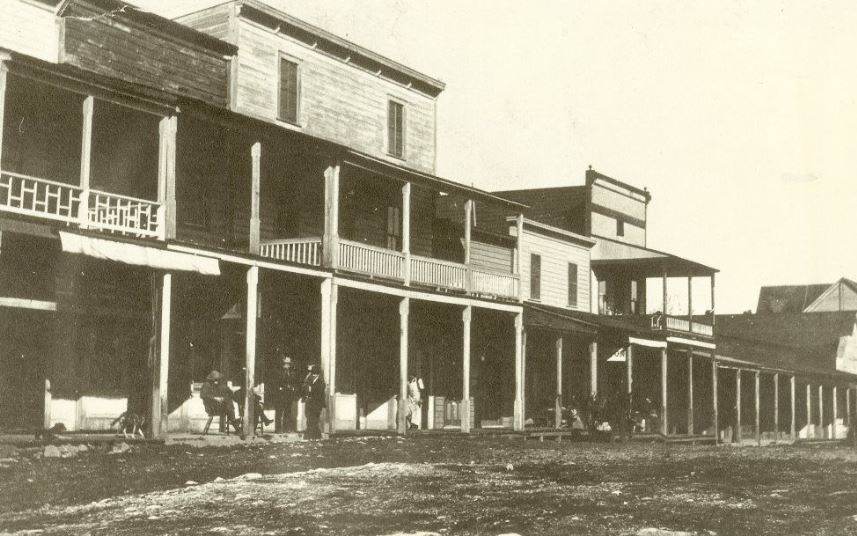On December 17, 2018, California’s Third District Court of Appeal affirmed a judgment setting aside El Dorado County’s approval of a proposed Dollar General store in Georgetown with a mitigated negative declaration. The Court held that while aesthetics are subjective, “lay opinions can provide substantial evidence to support a fair argument that a project may have a significant aesthetic impact on the environment, triggering the need to prepare an environmental impact report (EIR) pursuant to the California Environmental Quality Act (“CEQA”).” The Court also held that a planning or zoning finding conducted outside the requirements of CEQA (here, compliance with design guidelines), did not provide a substitute for CEQA review.
The case in Georgetown Preservation Society vs. County of El Dorado et al. ((2018) 30 Cal. App.5th 358, filed Dec. 17, 2018), involved a proposed Dollar General store on the main strip of Georgetown, a state Historical Landmark known for its association with the California Gold Rush. Described as a “quaint” town, it is characterized by older structures from the era. The developer SimonCRE Abbie, LLC proposed a 9,100 square foot store with a 12,400 square foot parking lot to be constructed on three lots on Main Street. From the start, the proposed project met resistance from the community, who felt that the building was too large and would not fit in visually or functionally with the surrounding context. Throughout the approval process, numerous members of the public spoke in opposition of the project, including a licensed architect, professional engineer, and city planner. The majority of the commenters were residents of Georgetown and felt that the project was “severely mismatched with the adjacent historic buildings.”
The project was approved by the Planning Commission and appealed to the Board of Supervisors, who found that the project complied with the County Zoning Ordinance, “substantially conformed to the El Dorado County Historic Design Guideline(s)” and that it would not substantially detract from Georgetown’s historic commercial district. The County relied on the mitigated negative declaration, which was tiered off the County’s 2004 General Plan EIR. The County’s CEQA analysis found that the project incorporated architectural features and styling, materials, and colors, consistent with the Historic Design Guide for the area. As such, the “impacts would be less than significant”.
Both the trial court and District Court of appeal disagreed. “A public agency’s own design review is not a substitute for CEQA review” – and that conformity with a general plan does not insulate a project from EIR review where it can be fairly argued that the project will generate significant environmental effects (known as the ‘fair argument’ standard).
The District Court found that the public testimony – lay opinion – was sufficient to qualify as substantial evidence to support a fair argument that there would be a significant aesthetic impact by the project. As such, the County had to conduct an EIR to evaluate the potential impacts. Importantly, the court found that lay commentary on nontechnical matters is admissible and probative, so that lay testimony can satisfy the fair argument test. “Personal observation on [these] nontechnical issues can constitute substantial evidence” (citing Ocean View Estates Homeowners Assn., Inc. v. Montecito Water Dist. (2004) 116 Cal.App.4th 396, 399). In this case, a large number of interested people believed the project would have a significant and negative effects on aesthetics. Their comments that the project was too big or boxy to blend in so that the final building would “damage the look and feel of the historic center of Georgetown” was “enough to trigger an EIR.” Despite the subjective nature of aesthetic concerns, it “is clear that the project may have a significant adverse environmental impact. Whether it will or will not have such an impact is a question that an EIR is designed to answer.”
While a few stray comments may not be enough, “the evidence here goes beyond a few people expressing concern about the aesthetics of the project.” The court also held that County’s failure to make explicit findings in the record on the credibility of the public comments precluded its “manufacturing after-the-fact findings” to justify its dismissal of the public comments on the ground that they did not constitute “substantial evidence.”
Both CEQA practitioners and project proponents have long been frustrated by the lack of definitive ‘bright line’ standards for evaluating a projects’ aesthetic impacts. What is important is that context is important, and this case highlights how projects within designated historic areas cannot solely rely on design guidelines to satisfy CEQA review.
Authored by Reuben, Junius & Rose, LLP Attorney Tara Sullivan
The issues discussed in this update are not intended to be legal advice and no attorney-client relationship is established with the recipient. Readers should consult with legal counsel before relying on any of the information contained herein. Reuben, Junius & Rose, LLP is a full service real estate law firm. We specialize in land use, development and entitlement law. We also provide a wide range of transactional services, including leasing, acquisitions and sales, formation of limited liability companies and other entities, lending/workout assistance, subdivision and condominium work.


